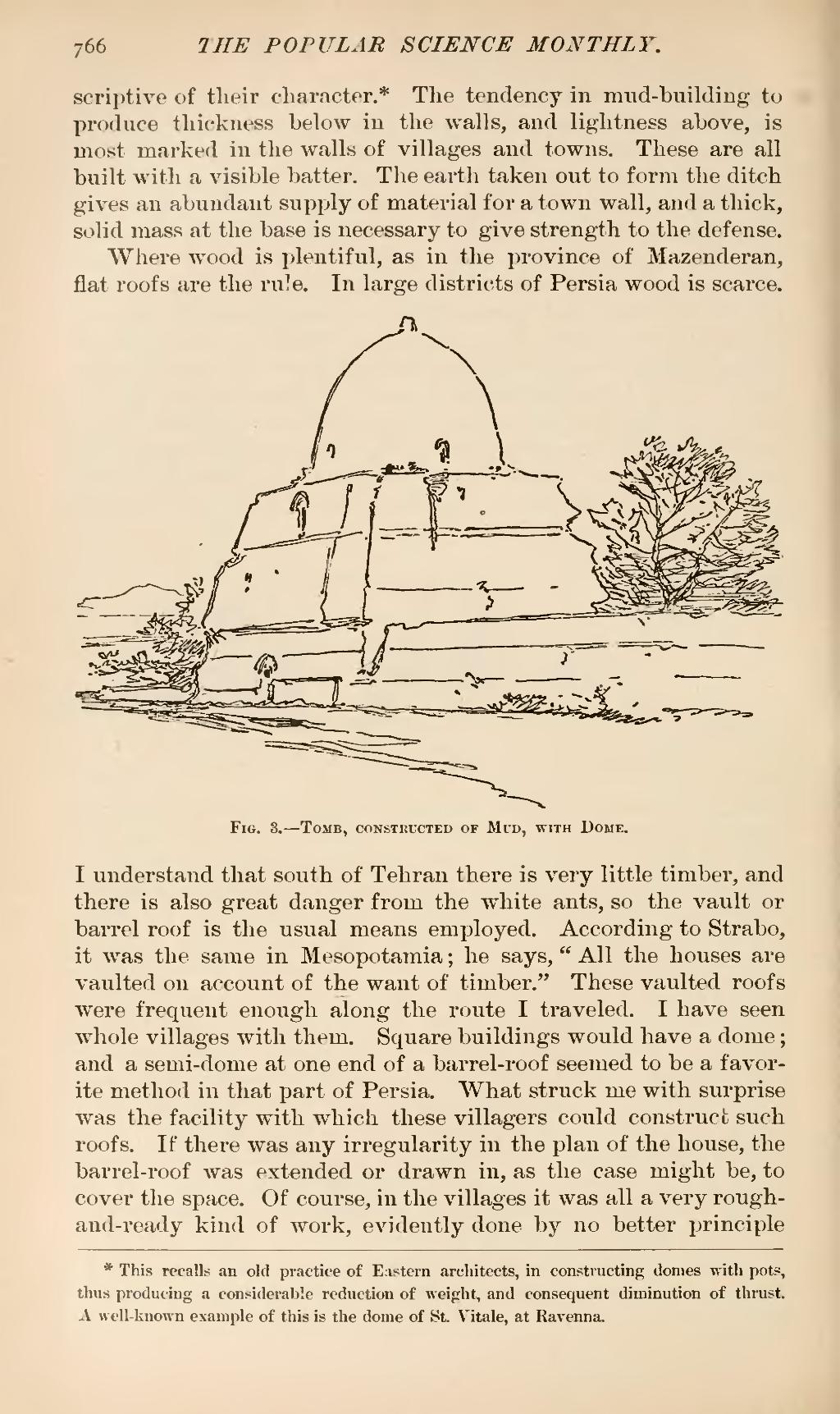scriptive of their character.[1] The tendency in mud-building to produce thickness below in the walls, and lightness above, is most marked in the walls of villages and towns. These are all built with a visible batter. The earth taken out to form the ditch gives an abundant supply of material for a town wall, and a thick, solid mass at the base is necessary to give strength to the defense. Where wood is plentiful, as in the province of Mazenderan, flat roofs are the rule. In large districts of Persia wood is scarce.

Fig. 3.—Tomb, constructed of Mud, with Dome.
I understand that south of Tehran there is very little timber, and there is also great danger from the white ants, so the vault or barrel roof is the usual means employed. According to Strabo, it was the same in Mesopotamia; he says, "All the houses are vaulted on account of the want of timber." These vaulted roofs were frequent enough along the route I traveled. I have seen whole villages with them. Square buildings would have a dome; and a semi-dome at one end of a barrel-roof seemed to be a favorite method in that part of Persia. What struck me with surprise was the facility with which these villagers could construct such roofs. If there was any irregularity in the plan of the house, the barrel-roof was extended or drawn in, as the case might be, to cover the space. Of course, in the villages it was all a very rough-and-ready kind of work, evidently done by no better principle
- ↑ This recalls an old practice of Eastern architects, in constructing domes with pots, thus producing a considerable reduction of weight, and consequent diminution of thrust. A well-known example of this is the dome of St. Vitale, at Ravenna.
